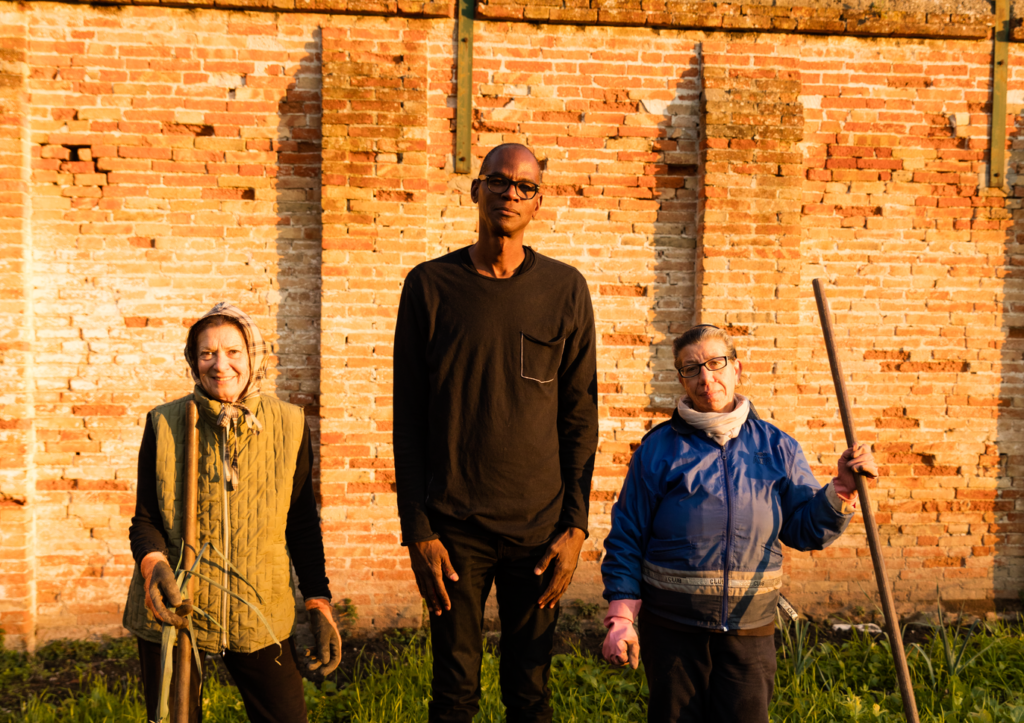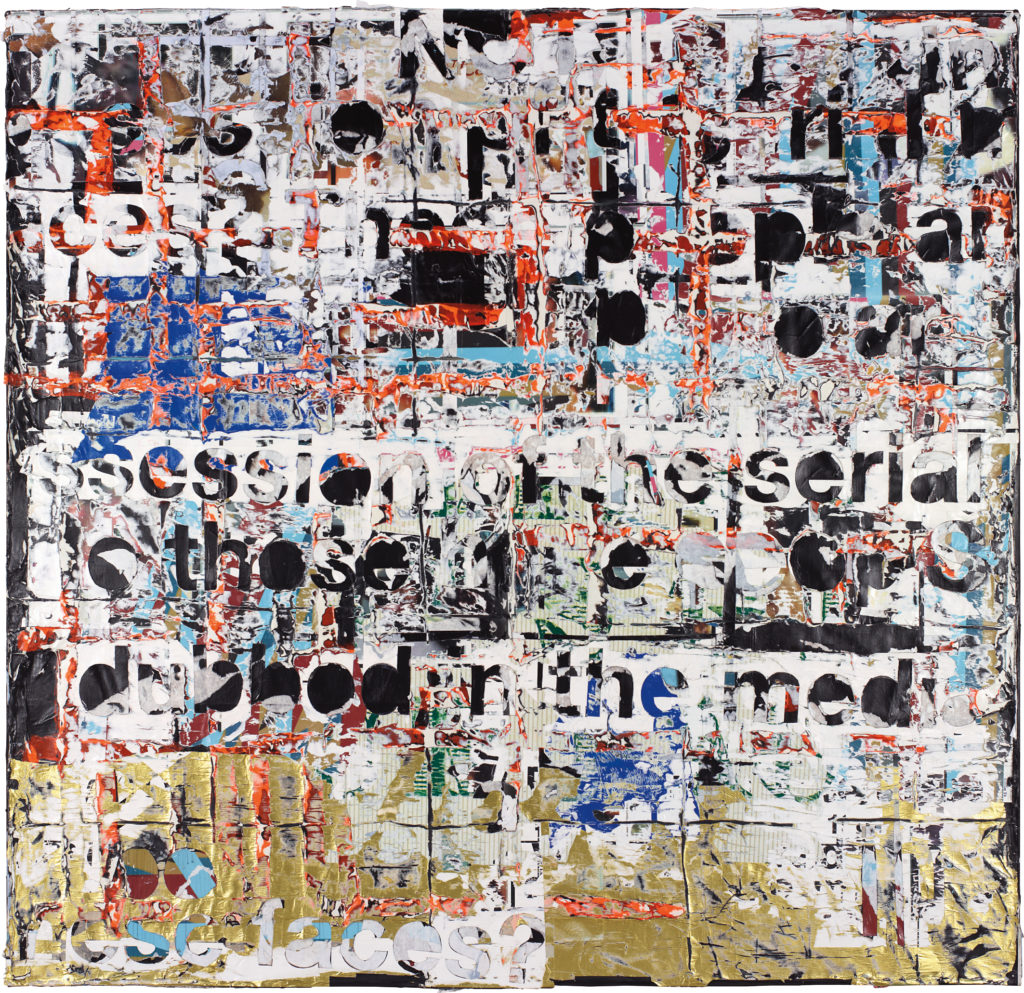People
Mark Bradford Bets on Empathy in Dark Times
The artist launches his inspiring project with a women's prison in Venice.

The artist launches his inspiring project with a women's prison in Venice.

Brian Boucher

“Listen,” Mark Bradford said to me on Wednesday, “there’s always been a Trump in your life. And you’re still here. Right? We didn’t get here by listening to the bullies. We have value. You’re important. That’s what we have to hold on to.”
At a lunch event where Bradford was announcing a project timed to the 57th Venice Biennale, which launches this summer, the artist greeted this writer warmly, as though we’d known each other for ages. (We’d never met.) As other writers showed up at the restaurant, in New York’s East Village, he kept up the level of cordiality. “I’m a hugger. I’m a toucher. I really am.”
Alongside an exhibition of his work, Bradford has undertaken an initiative with—and is financially supporting—Rio Terà dei Pensieri, a nonprofit that employs those who have been sentenced to jail time in Venice and the surrounding region.
Among Rio Terà’s activities are the cultivation of a vegetable garden and the sale of clothing, bags, accessories, and cosmetics crafted by the inmates of a women’s prison. Bradford’s project with the nonprofit is called Process Collettivo, and it aims to raise awareness of problems in the penal system and to promote reintegration of former inmates.

A participant in the Rio Terà dei Pensieri Social Cooperative working in the kiosk. Campo Santo Stefano, Venice, Italy. July 2016. Photo:Agata Gravante.
A shop that will open in Venice this spring will be the public face of the project. It will offer exhibition catalogues, a limited-edition bag designed by Bradford, and Rio Terà’s customary goods, with all the proceeds going to foster what’s currently lacking—a robust program to help the inmates transition into post-prison life. The shop will not only raise funds but also provide computer access, job training, help with finding housing and mental health care, and other services.
“When you think of Venice,” Bradford said during a presentation, “you do not think of a women’s prison.” It took spending a bit of time in the city, and asking the right people, he said, “to get past the gondolas” and find the people with the most urgent needs.
Bradford’s exhibition at the US Pavilion, “Tomorrow Is Another Day,” will be co-curated by Christopher Bedford, director of the Baltimore Museum of Art, and Katy Siegel, the museum’s senior programming and research curator. On Wednesday, Bedford positioned Bradford as the one true inheritor of the tradition of Abstract Expressionism, and one whose work is directed outward, to social issues, rather than to the artist’s inner life.
For her part, Siegel pointed out that while many are feeling a new sense of urgency about social and political issues, such concerns are nothing new for Bradford. The artist grew up gay, without a father, in beleaguered South Central Los Angeles, and lived through the AIDS epidemic, and his works have incorporated references to topics ranging from the AIDS crisis to access to potable water.
Bradford is best known for large, abstract multimedia works, typically referred to as paintings, that incorporate found materials such as layers of street posters and a kind of paper used by African-American hairdressers; Bradford worked at his mother’s hair salon for years, and his sense of working with his materials is deeply informed by that experience. His sense of being a part of both the art world and other social spheres, too, was fostered there.
“I’ve always had to go back and forth with the mainstream,” he said. “While I was having shows in the art world, and talking all this stuff, when I hit the hair salon, I at least better know what Whitney Houston is doing, what Michael Jackson is doing.”

Mark Bradford, Rat Catcher of Hamelin III (2011). Photo courtesy Phillips.
His works have sold at auction for as much as $5.8 million, a record set at Phillips London in October 2015. Such prices have rocketed Bradford, born in 1961, into the top tiers of African-American artists on the market today. According to a recent New Yorker profile, his paintings sell on the primary market for up to $1 million (he’s represented by international powerhouse gallery Hauser & Wirth). He’s been the subject of museum exhibitions from The Hammer, in Los Angeles, to Tate Modern, in London, and he won the MacArthur Foundation’s “genius” award, with an unrestricted $625,000 purse, in 2009.
Bradford’s presentation came at a moment when everyone I know in the art world is asking “What now? What can we do?”—and in fact, everyone at my table at lunch on Wednesday was talking about it. Bradford provides a model. In 2014, along with his partner, Allan DiCastro, and the philanthropist and art collector Eileen Harris Norton, he co-founded Art + Practice, a nonprofit that works with foster children in his native Los Angeles. “Their needs are so great,” he said.
“We all feel overwhelmed by the current dystopian moment,” Bedford said, “but Mark makes everybody feel like we can get up and do something.”
Siegel agreed, telling me, about the Venice initiative, “Working on a project like this makes you feel less crappy.”
The artist’s high-energy presentation was infectious. After acknowledging a widespread sense of vulnerability among progressive, liberal-minded people, he proclaimed a need to demand a place at the table. “I believe we can take back the mainstream,” he said. “Stay there long enough and they’ll get used to your ass.”
He aimed to counteract a sense of doubt about art’s relevance at this pivotal moment, urging a long game, a battle to be fought on many fronts.
“I love what we do,” he said. “I just think more people need to hear us. After a church service, there should be a contemporary art lecture on feminism.” Just as Art + Practice, in concert with the Hammer Museum, mounts contemporary art exhibitions at its facility in order to bring art to underserved communities, why, he asked, shouldn’t we take our message to our local libraries and YMCAs?
It was at that moment that a light bulb went on over my own personal head. There is a YMCA across the street from my building, in Manhattan’s Washington Heights neighborhood, long known for its Latino immigrant communities. Why not, in addition to protesting, donating to just causes and so on, offer to give a talk on contemporary art to the kids who use the Y’s programs?
Informed of this inspiration, Bradford practically jumped up and down. “Brian, that is what I’m talking about.”